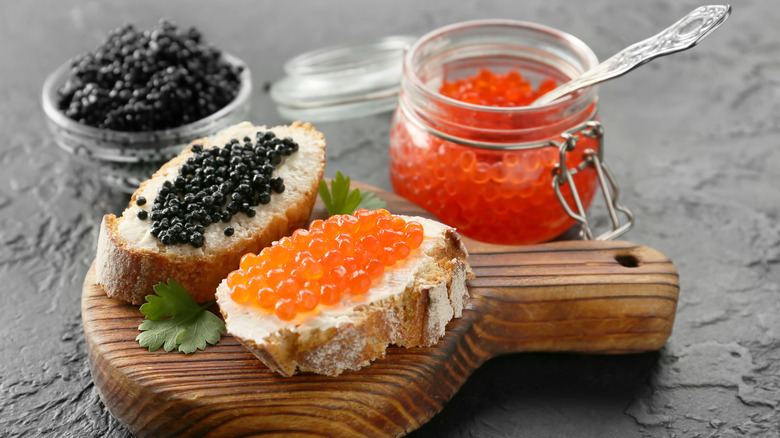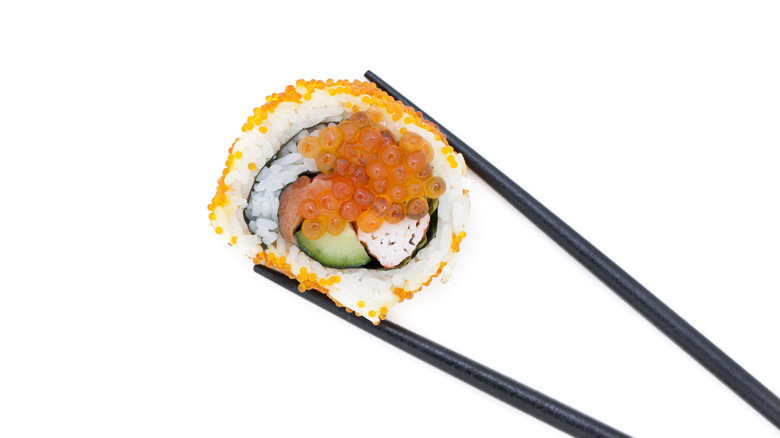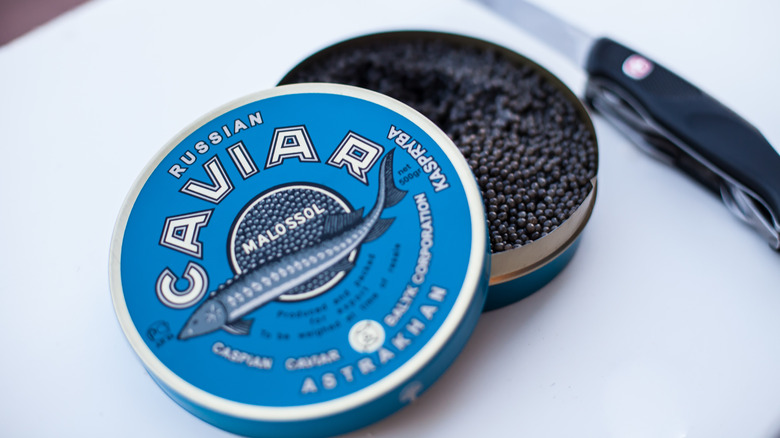What's The Difference Between Caviar And Fish Roe?
Just reading the word caviar probably conjures up images of celebrations, fine dining, and champagne. The blini-topping ocean delicacy often comes with a high price tag and an air of luxury. On the other hand, fish roe probably doesn't conjure up much of anything. Many people use the terms fish roe and caviar synonymously. The varying labels, colors, and sizes of the salty bites you see on shelves and menus only add to the confusion, but there is a marked distinction between the two.
Much like champagne, there's a difference between fish eggs that come from one place versus another. True champagne is from the Champagne region of France — the rest are just sparkling wines, per Wine Country. Similarly, the eggs from just any old fish are not always considered caviar; they're just fish eggs or roe. But does it really matter? What is the difference between a porcelain-spooned scoop of black caviar versus the tiny orange balls that top your run-of-the-mill sushi roll?
Fish roe 101
Fish roe is a blanket term for the sac of fully-formed, unfertilized eggs found in the womb of a female fish. There is also something called soft roe that is from the male's seminal fluid, but the roe, as we know it, is the hard roe from the female.
There are several types of fish roe, including masago, which are from the smelt species and the small, orange eggs you find atop your sushi roll; tobiko, which is from flying fish species and also a popular sushi garnish; and ikura, from salmon, which are the larger, orange balls that burst in your mouth (via Medical News Today). Per a study published in Science Daily, fish roe is the best source of omega-3 fatty acids. The eggs are also a solid food source of vitamin D and B12, per Global Seafoods, and are basically a nutritious addition — some even call them a superfood — to anyone's plate. The USDA even recommends roe be included in babies' diets.
What is caviar?
Caviar is fish roe, but fish roe is not caviar. In order for fish eggs to be considered caviar, they must come from one fish and one fish only — the sturgeon, per Marky's. Historically, only eggs from the sturgeon of the Caspian and Black seas were given the coveted title; however, nowadays, the caviar umbrella covers the tiny black eggs from all species of sturgeon, including the popular beluga and osetra.
Varying label laws from country to country add to the confusion. In some corners of the globe, only the eggs of a sturgeon can carry the caviar label. In others, any type of fish roe may wear the caviar crown. Organizations, including the United Nations, have joined forces to try and establish blanket rules around the terminology. In the meantime, caviar is often used on labels, but the type of fish is designated if it's not sturgeon — explaining why you sometimes come across salmon caviar or trout caviar, etc.
Another marked difference is how the caviar is prepared. Fish roe is just fresh fish eggs, while caviar is salted and cured. Anything other than salt on the ingredient list indicates it's probably not the real deal, per Marky's.


